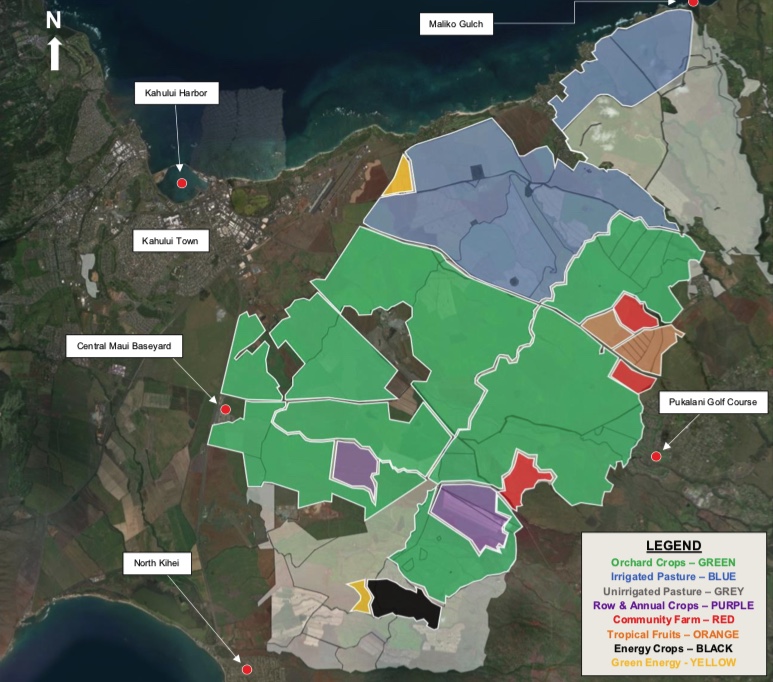The Water Commission’s June decision and order on water use permits for the Na Wai ‘Ehā surface water management area involved some very big last-minute changes.
Mahi Pono, LLC, which a few years ago purchased Alexander & Baldwin’s former sugarcane lands in Central Maui with the intent to grow diversified crops there, had initially been awarded a permit for 15.65 million gallons of water a day (mgd). But the commission quickly “corrected” its order to reflect its positions on system losses, alternative sources, and the acceptable amount of water needed for diversified crops.
Mahi Pono ended up with a permit for just 4.98125 mgd.
On July 8, the company filed a motion for partial reconsideration, which sought to amend its water allocation to 11.22 mgd. That’s the amount Mahi Pono was to receive under a stipulation reached by the company and the Office of Hawaiian Affairs, the Hui o Na Wai ‘Ehā, and the Maui Tomorrow Foundation shortly before final arguments in the contested case hearing on the water use permits.
Mahi Pono’s attorneys noted that the commission had encouraged and praised the stipulation.
“In other words, at the urging of the Commission, Mahi Pono gave up its opportunity to move to reopen the contested case hearing to negotiate a settlement agreement to resolve the Community Groups’ and OHA’s assertions that only 4.68 mgd should be allocated to [Mahi Pono] and in which Mahi Pono agreed to significant commitments, only to end up with an allocation marginally higher than the Community Groups’ and OHA’s originally proffered allocation and less than half the amount agreed to by the parties in the Stipulation.
“To prevent this substantial injustice, Mahi Pono respectfully requests that the Commission reconsider its D&O as amended by the Errata and adopt the terms set forth in the Stipulation,” wrote the company’s attorneys, David Schulmeister and Trisha Akagi, in their motion.
In a September 22 minute order, commission chair Suzanne Case relayed the commission’s denial of Mahi Pono’s motion.
“The Commission commends the parties for coming together to forge the Stipulation and hopes that Mahi Pono will continue to stand by the commitments made in the Stipulation. The Commission, however, has to consider the larger picture and its trust responsibilities to balance water use amongst users, uses, and resource protection,” she wrote.
She continued that the commission revised Mahi Pono’s allocation because the commission had imposed a daily limit of 2,500 gallons per acre per day on other diversified agriculture permittees, and “it was important to treat all diversified agriculture equally, regardless of size.”
The commission had also disagreed with the number of total acres to be irrigated by Mahi Pono. Rather than 3,740 acres, which is what the allocation in the stipulation was based on, the commission based its allocation on 3,650 acres.
“The stipulation also allows Mahi Pono an additional 500 [gallons per acre per day] over the same 3,740 acres if it meets certain commitments. That is not acceptable as no other diversified agricultural user is allowed to increase its per-acre water usage,” Case wrote.
She also noted that Mahi Pono’s revised allocation reflects its ability to pump water from one of its wells, and that the order allows permittees to divert water in excess of their permitted amounts in order to fill their reservoirs. “This would make additional water available for Mahi Pono,” she wrote.
—Teresa Dawson
For Further Reading


Leave a Reply